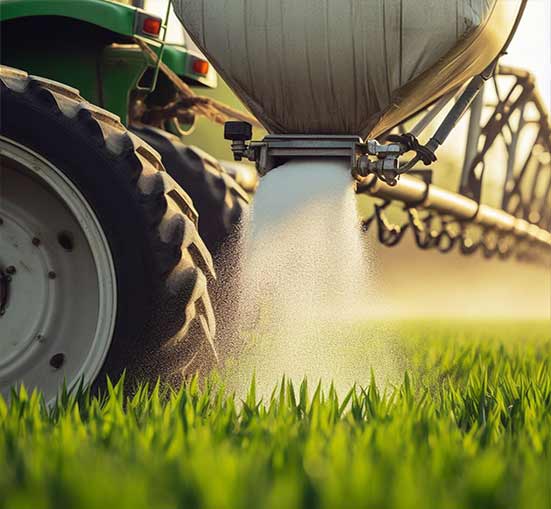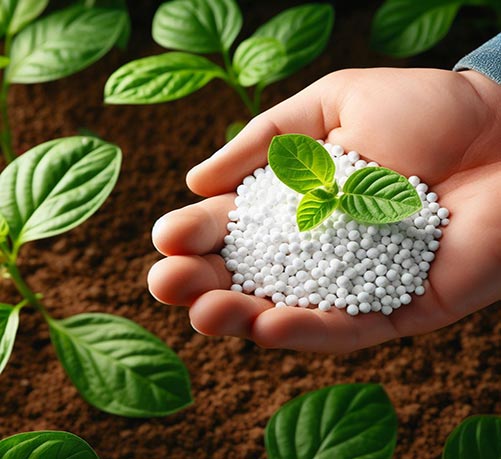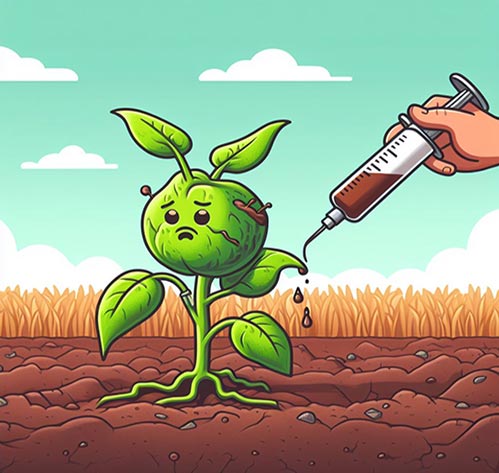palayesh cood
Fertilizer
What is fertilizer?
The definition of fertilizer is to substances that consist of one or more elements, or in simpler terms to organic or inorganic substances that provide part of the food for trees or plants and by strengthening the soil, it increases the growth and fertility of plants.
Fertilizer is a substance that is added to the soil or planting variety to improve the performance and growth of plants. The main purpose of using fertilizer is to provide nutrients needed by plants for the growth and cultivation of plants.
Fertilizers contain the main nutrients such as nitrogen (N), phosphorus (P) and potassium (K), which are known as the most used elements by plants. Usually, the best source of nitrogen supply for agricultural land is iran urea fertilizer, this fertilizer plays a major role in the growth and greenness and fertility of all plants on the planet. The next element is phosphorus, this mineral plays an essential role in the growth of roots and branches. There are many phosphate fertilizers in the market, but DAP fertilizer is the best fertilizer for agriculture due to its nitrogen content.
Nitrogen
Nitrogen fertilizer is the first main nutrients for plant growth and development, which has many effects on plants:
One of the most important elements for making chlorophyll is nitrogen. Nitrogen is necessary for the greenness of plants and their leafing. Because nitrogen provides the basis for protein compounds and amino acids, also by increasing nitrogen in the soil and meeting the plant’s needs for this element, the growth and production of all types of plants increases.
One of the benefits of using nitrogen fertilizer is increasing germination and increasing roots. Nitrogen plays an important role in plant germination and plant root growth. With sufficient supply of nitrogen, germination occurs faster and roots develop better. Also, nitrogen increases tolerance to stresses such as drought, heat or salinity in the plant, of course, this is in the condition that the appropriate amount of nitrogen fertilizer reaches the plant, if too much of this fertilizer is given, it will have the opposite effect for the plant. to forgive But overall, providing the right amount of nitrogen for plants can make them resistant to difficult environmental conditions.
Nitrogen is used to improve the quality of products, the use of nitrogen fertilizer in controlled conditions improves the quality and yield of products, this fertilizer has important effects in increasing the protein content, increasing the weight of the fruit and developing the desired taste and color. Its use increases yield in crops such as vegetables, fodder plants and horticultural crops.
phosphorus
It can be said that the most important benefit of using phosphorus in plants is the increase of roots. Phosphorus element is very important for the growth and expansion of roots. By expanding and strengthening the roots, it is possible for the plant to absorb nutrients and water from the soil. Phosphorus plays a role in the transfer and storage of energy in plants.
Phosphorus is involved in converting sunlight into chemical energy through photosynthesis and transferring this energy to different parts of the plant for the growth and expansion of roots. In the results of the experiments, it is clear that phosphorus increases the flowering of plants and thus increases the yield of plants. Phosphorus is essential in the development of flowers, fruits and seeds and increases the yield and quality of products.
Also, phosphorus helps to improve the health of plants and trees and makes them more resistant to various diseases and pests. Phosphorus increases the plant’s resistance against disease-causing agents by protecting the coating of cell walls and producing defensive enzymes.
Phosphorus plays a role in increasing plants’ tolerance to various environmental stresses such as drought, very cold and hot temperatures, and nutrient imbalance. However, excessive use of phosphorus can have negative consequences for the environment and also lead to the loss of other elements by creating competition between other essential elements in the soil.
potassium
Potassium is an essential macronutrient for plant growth. The use of potassium fertilizer can have several beneficial effects on plants:
First, the point that many people do not know is that one of the elements that play a role in the plant’s photocenter is potassium. Sunlight is one of the plant’s food sources, which is activated by the enzyme potassium, which converts sunlight into energy inside the plant. This element helps to regulate the movement of water in plant cells and helps to absorb water better and reduce water loss through transpiration. It can increase the plant’s ability to withstand drought stress.
Another benefit of potassium is increasing the plant’s resistance to pest penetration by increasing the thickness of the cell walls, and this element can also smooth the path of nutrient transfer in plants, which other elements quickly find their way to the leaves and fruit through the stem. go through The most important element that can increase the weight and color of fruit is potassium. If in the market of trade and agricultural industry, the fruits that are more colorful and beautiful have a higher chance of sale, for this reason, one of the fertilizers that can make the fruit colorful and tasty is the use of the right amount of potassium.
Also, in many salty and unsuitable soils or hot and dry areas, the plant shows a negative reaction. This means that these factors may put the plant under severe stress, as a result of this stress, the plant eventually dries up. Potassium plays a major role in maintaining plant balance.
Also, fertilizers may contain secondary nutrients and micronutrients such as calcium (Ca), magnesium (Mg), sulfur (S) and micronutrients such as iron (Fe), zinc (Zn), copper (Cu) and manganese (Mn). ) to be These nutrients are placed in fertilizers in the form of chemical compounds or organic compounds.
Organic fertilizers can be organic or inorganic. Organic fertilizers are extracted from natural sources such as animal manure, vegetable manure, compost and green manure. In addition to providing nutrients, these types of fertilizers have the property of improving the soil structure and increasing the ability of the soil to retain moisture.
Mineral fertilizers are often prepared from minerals such as sulfates, nitrates, and phosphates. These types of fertilizers with precise and controllable compositions provide the possibility of providing different ratios of nutrients and are usually known as synthetic fertilizers.
Using fertilizers correctly and according to the needs of plants and soil can help in increasing the yield of agricultural products, improving the quality and characteristics of plants and maintaining the productivity of natural resources.
Why should iron fertilizer be used?
Agricultural lands need organic and mineral materials as well as nutrients such as iron, nitrogen, potassium, and phosphorus for the growth and fertility of plants. Iron particles are located inside chloroplasts, which play a very important role in making chlorophylls and greenness, plant greenness has a direct relationship with photosynthesis. Naturally, with the increase in photosynthesis, the growth and fertility of trees and plants will increase.
Everything you need to know about iron chelation
Certain types of soil, such as clay, chalk, overwatered soil, or soils with a high pH, can make available iron unavailable to plant roots or not available at all. Iron is a metal ion that can react with oxygen and hydroxide. When this happens, iron is useless to plants because they are unable to absorb it in this form. To make iron readily available to plants, a preservative is used to protect the iron from oxidation, prevent it from leaching from the soil, and keep the iron in a form that plants can use.
Types of iron chelates
Iron chelators are small molecules that bind to metal ions to make micronutrients such as iron more readily available to plants. The word “chelate” is derived from the Latin word “chele” which means crab’s claw. The chelator molecules wrap around the metal ions like a tightly closed claw. Applying iron without a chelator can be a waste of time and money because plants may not be able to absorb enough iron before it is oxidized or leached from the soil. Fe-DTPA, Fe-EDDHA, Fe-EDTA, Fe-EDDHMA, and Fe-HEDTA are all common types of iron chelate that you may find on a fertilizer label. These types of fertilizers are available in the market as hydroponic fertilizers due to their high solubility. There are different types of iron chelates, each with its own characteristics. The strength of the chelate strongly depends on the pH level of the solution, for example in the substrate or in the soil. There are several chelators on the market that adjust to the pH level around the root.
Why should we use iron chelate?
Here the stability of iron chelates is a priority. If the iron chelate is not stable, it is not strong enough to hold iron in solution. At the pH level where chelate is not stable, iron precipitates quickly and as a result the plant is unable to absorb enough iron. The iron precipitated due to the incorrect pH level has been converted to 3-valent iron. The cleavage of the chelate cannot be reversed because it is oxidized (known as iron rust). Therefore, choosing a suitable chelator is very important. Since the elements in the soil are heterogeneous and complex, micronutrients are easily oxidized or precipitated. Chelated fertilizer increases the bioavailability of micronutrients, including iron, copper, manganese, and zinc, and leads to productivity and profitability of agricultural and horticultural crops. If the crop is grown in low micronutrient stress or soils with a pH higher than 6.5, iron chelate will be strongly required by the plant because non-chelates will have less absorption power. Iron chelate has a wonderful effect on all plants and flowers, such as rose seedlings, or on all kinds of trees, such as citrus trees, apples, cherries, and on all kinds of summer vegetables and vegetables, such as watermelon, cucumber, tomato, and alfalfa.
Types of fertilizers and their effects on plants
The fastest way to deliver elements to plants is to use chemical fertilizers, Chemical fertilizers are mostly produced in petrochemical and refinery. such as urea fertilizer: with 46% of nitrogen, it is the most widely used chemical for agriculture in the world, and its effect on trees is clearly and quickly determined, of course Due to its poisoning for trees or accumulation of nitrates in fruits and agricultural products, caution should be exercised in consuming too much of it. SSP simple superphosphate: one of the good phosphate fertilizers is simple superphosphate, which in addition to providing 20 to 22% of the required phosphorus, several other elements such as manganese, iron, calcium, and magnesium and zinc along with 11 to 12% of sulfur for plants. provides that it is very effective for trees. Super Phosphate Triple TSP: It can be said that the second best-selling phosphate fertilizer is Triple Super Phosphate, it is also known as TSP. The total phosphorus is 46% and it is sold in 50 kg bags by different companies, including in packaging. The agricultural service company is marketed. Diammonium Phosphate Razi DAP: This joint is fully explained on the page related to it, but in short its constituent elements are 46% phosphorus and 18% nitrogen, which is one of the most important reasons for its popularity among farmers and gardeners. It is an element with a significant percentage and because of this, diammonium is the best-selling phosphate fertilizer in the Iranian market, which is produced by Razi Petrochemical, although diammonium phosphate is packaged in 50 kg bags by the Agricultural Support Services Company in The market is accessible. Complete fertilizer or NPK: NPK plays a key role in agriculture and horticulture to fully understand what NPK is and what its uses are. First, we need to know what elements it is made of, its main elements are nitrogen, phosphorus, potassium, which have different percentages in the market, but one of the most widely used doses is 20 20 20, which is one of the 3 key elements with 20 percent nitrogen. It is composed of 20% phosphorus and 20% potassium, and it is fully compatible with most chemical fertilizers, or its use increases the yield of trees. Potassium sulfate: Potassium sulfate is the most widely used potash fertilizer among all types of potassium fertilizers. Potassium sulfate is divided and categorized into different types, which are fully explained on the product page.




